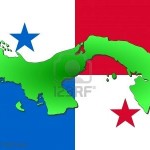
Although the official and most used language in Panama is Spanish, it coexists with 19 other languages, such as the indigenous Bugle, Ngäbere, Embera, Wounaan, Kuna, Naso Tjerdi and Bribri (recently recognized by the Panamanian government) languages. There is also a large presence of English and English Creole.
Because of the significant US presence and cultural influence, which was more pronounced after the construction of the Panama Canal in 1914 up to the end of 1999, Panamanian Spanish has absorbed a significant amount of English vocabulary.
Also, during the nineteenth century there was an important influx of immigrants from the Caribbean who left their mark on the language.
For their part, languages such as French and languages from different colonies such as Hebrew, Arabic, Italian and Hindi, have not had a marked impact.
We must not forget the significant African presence in this country, beginning with the first colonies that brought African slaves that would have an influence on the language and culture of Panama.
With this mixture of languages and linguistic influences from very different backgrounds, Panamanian Spanish has a series of peculiarities that distinguish it. We will show them below.
Phonetics
Lisp
Loss of intervocalic -d
Weakening of final and intervocalic consonants
Change of –r to -l, -h to –j and –h to –g when followed by –ue (hueco->güeco)
Velarization of –n.
Changeof –e to -i in hiatus (menudear->menudiar).
The -vé suffix in imperatives (andavé).
Morphosyntax
Use of “tu” and, for second person plural, “usted”
Common to put the subject first in interrogative sentences: ¿cómo tú te vas?.
Subject pronouns put before infinitives: “después de tú decir algo”.
Tendency to use “de que”.
Lexicon
Use of words shared with the Colombian and Venezuelan Caribbean such as “chiva” to describe a small bus.
Although indigenous languages have not greatly influenced Panamanian language, some vestiges of these languages can be found in the current lexicon: Chicha, Chicheme, Chilate, Tamale, Ullama and Churu, among others.
In addition, Panamanian language followed the logical evolution of languages from the Spanish branch and, although it assimilated new words from other languages, in most cases it would “adapt” these new words in accordance with Spanish grammatical rules. In this sense, English, aside from being widely used in the business and tourism spheres, has a clear influence on the Spanish spoken in Panama, with English words being transformed into Spanish. As such, a Panamanian will not “aparca”, but rather “parquea”, which comes from the English verb “to park”. Neither does a Panamanian “va de compras”, instead he or she will “chopear” (from the English “to shop”). And rather than “chopear” in a “centro commercial” they would do so in a “mol” (from the US English “mall”).
So, if we travel to Panama, we’ll have to “tomárselo suave” (take it easy), as a Panamanian would say.





